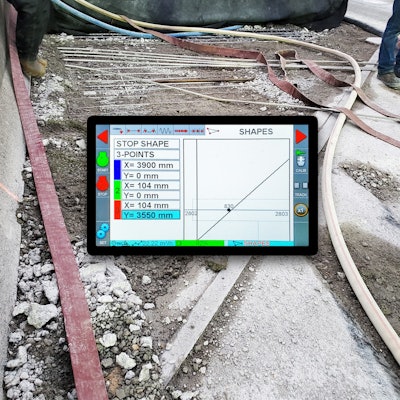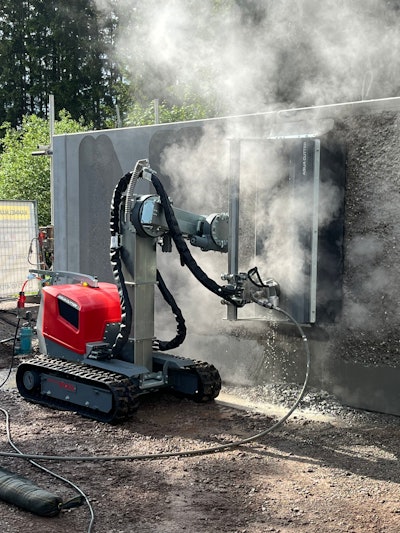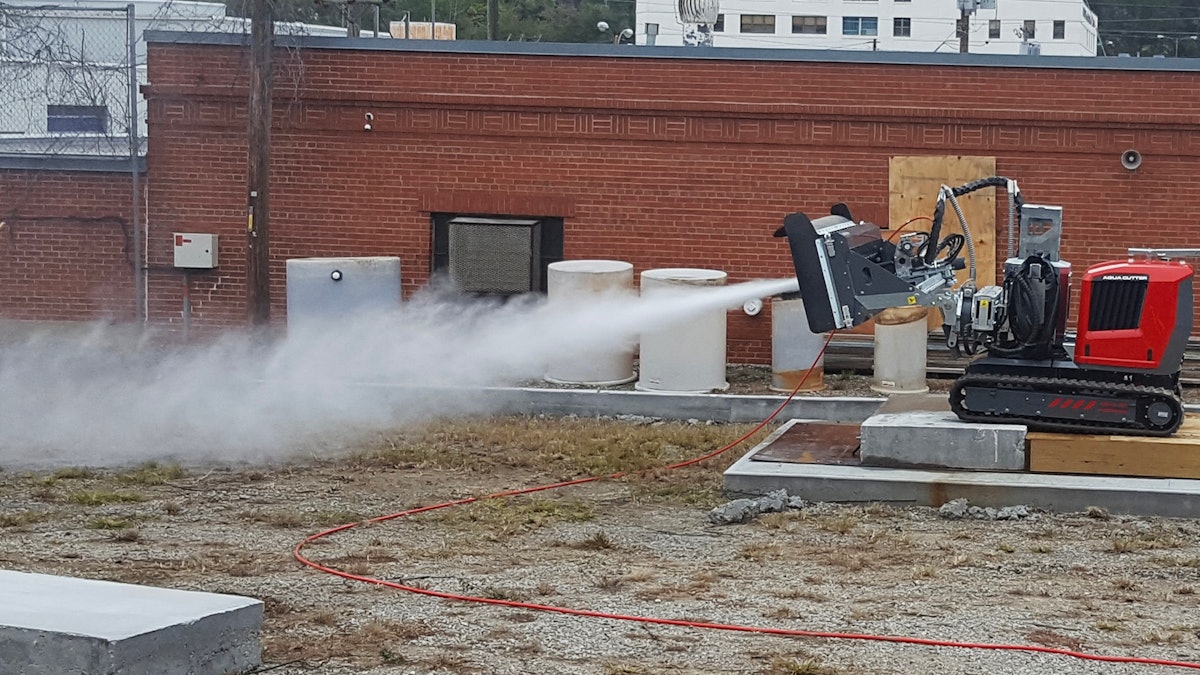The rate at which technology evolves is increasing. Gone are the days of advancements taking a decade-plus to develop. In some instances, technology can become outdated in a matter of years, maybe even months. Think of a smartphone. The latest devices have built-in artificial intelligence and augmented reality features that the average person had barely thought of a few years ago.
Hydrodemolition equipment is no exception. Instead of going against jackhammers and hand lances, concrete contractors are competing against the latest hydrodemolition evolutions. Old machines can still outperform handheld equipment, but new hydrodemolition technology offers significant advancements. Recent features provide superior results in less time, ultimately giving concrete contractors who invest in new technology a step ahead in growth, innovation, and project outcomes.
User Friendliness
Many contractors worry about making the leap to new technology, but with user-friendly features and an intuitive design, today’s hydrodemolition robots are easier than ever to operate. Dedicated support and training are also available to ensure the entire crew feels confident and capable. Older machines, which have fewer automated functions, tend to require more operator experience and intuitive understanding to initially get the settings right. Modern machines’ settings paired with a supportive manufacturer make it far easier for an operator with basic training to confidently run equipment.
With a state-of-the-art operating system, users can set parameters tailored to the specifications in which they need to remove concrete and save those presets for future use. Storing these parameters also provides a good point of reference for reviewing the machine’s production after a job and where potential adjustments could be made. Should the machine’s parameters require any tweaks, it can be as simple as fine-tuning the settings. With older systems, some changes required an operator with extensive knowledge and years of experience to know how to make small, nonspecific adjustments.
Some new machines also allow users to say goodbye to manually keeping maintenance logs. These machines present clear, easy-to-understand error messages should a problem occur, slashing potential troubleshooting time.
Implementing any change to an equipment fleet will have a learning curve, but thankfully, modern technology is designed to make the transition as seamless as possible. With user-friendly interfaces, preset parameters, and easily accessible training materials, contractors and their teams can quickly adapt, turning the challenge into an opportunity for growth and development.
Upgraded Lance Systems
For most of the hydrodemolition industry’s 30-plus years, simply being able to execute hydrodemolition was enough to qualify as “cutting edge.” Controlling a water jet through mechanical means was a safer, faster, more sophisticated way to remove concrete compared to a jackhammer or hand lance.
Fairly recently, manufacturers introduced robots with a new lance movement to the market harnessing the benefits of both the oscillating and rotating lance movements. The result is a water jet that moves back to front and right to left. If the lance was holding a pen rather than shooting water, it would create a figure 8, or infinity, pattern.
The infinity pattern creates constant oscillation speed that results in greater production. Furthermore, it creates a rough but even result and virtually eliminates pipe holes, leaving behind the ideal bonding surface. Creating the perfect profile for superior bonding strength results in repairs that can last up to three times longer. This will please project engineers and prevent the job from being held up by subpar results.
 If the project also presents challenging shapes or angles, such as a bridge with a joint at a 45-degree angle, operators can set new machines to cut in a variety of shapes. So, the triangle shape leftover from a bridge joint no longer needs to be removed manually by jackhammers or hand lances.Aquajet
If the project also presents challenging shapes or angles, such as a bridge with a joint at a 45-degree angle, operators can set new machines to cut in a variety of shapes. So, the triangle shape leftover from a bridge joint no longer needs to be removed manually by jackhammers or hand lances.Aquajet
When an operation implements a machine that uses the infinity pattern, they’re making the most efficient use of all the force at their disposal. Contractors using equipment with an infinity pattern will typically increase efficiency by 15-20%, depending on the scope of the work. (This could increase to 50% with the proper settings and depending on which settings are changed.)
This lance system upgrade represents state-of-the-art engineering with precision and control previously thought unattainable. Contractors and their crews can take pride in knowing they are using one of the most advanced, efficient, and powerful tools available to set a new standard in their industry.
Advanced Components
Modern hydrodemolition machine components have more functionality for improved performance. For example, today’s hydrodemolition robots have a sensor in their hoist system to set the height of the hood, eliminating the need for operators to manually check. While some may think additional elements increase the likelihood of breakdowns, that isn’t the case. Components in new machines are designed to last and require less attention. For example, rollers had to be tightened daily on old machines. Today’s rollers are spring-tensioned with absolute sensors that easily adjust via a button, are wider to improve stability, are preset, and are much more durable. All these help to allow operators to approach them with a set-it-and-forget-it mentality.
 Today’s hydrodemolition robots are state-of-the-art, meticulously engineered machines with improved components and a variety of accessories. They provide immense improvements to productivity and ease of operation.Aquajet
Today’s hydrodemolition robots are state-of-the-art, meticulously engineered machines with improved components and a variety of accessories. They provide immense improvements to productivity and ease of operation.Aquajet
Speaking of tracks — those can impact a project’s quality and efficiency. Take a bridge job, for instance. Sometimes, operators will have to drive the machine up to a couple-hundred feet to the work area. New track systems allow the robot to now travel 50 m per minute as opposed to 30 m/m with an older machine. The modern track systems also provide a smoother ride, reducing wear on the machine, and increased stability during operation.
Adopting new technology seems like a significant step, but it’s important to consider the long-term benefits of reduced maintenance costs, more reliable equipment, faster project turnaround times, and an easier route to profitability.
Optimum Outcomes
If you still have machinery that performs adequately, investing in new equipment can seem unnecessary. Hydrodemolition contractors, however, aren’t competing with jackhammers and hand tools anymore. They are going up against the latest solutions that are rapidly advancing. Those who invest to produce better results in a quicker, easier manner take the lead. Concrete contractors who adopt the latest technology aren’t just investing in a machine, they’re investing in their company’s future.
View the original article and our Inspiration here


Leave a Reply